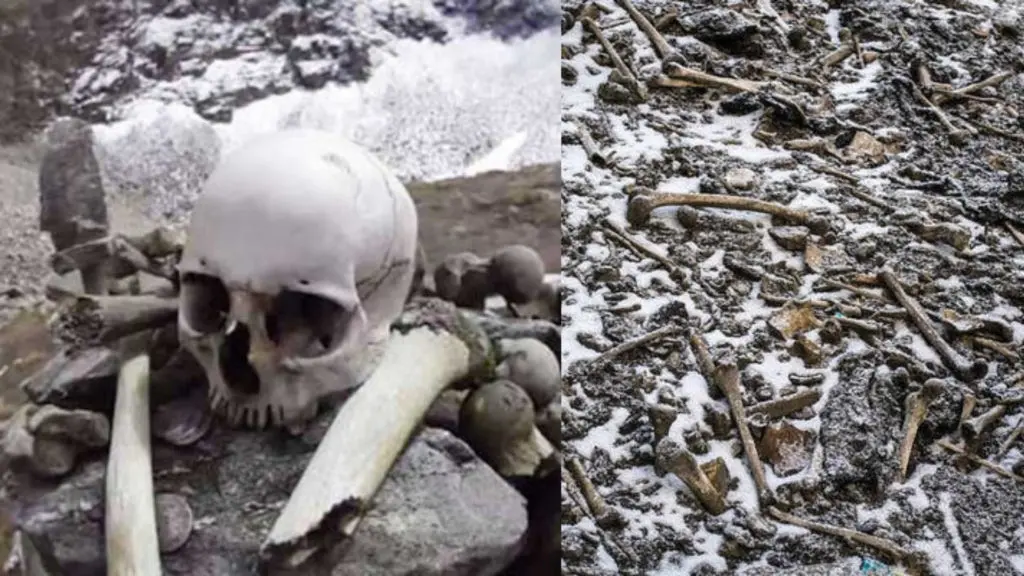In the year 1942, amidst the backdrop of World War II, an Indian army patrol ventured into the remote Himalayas. This mission would inadvertently lead them to a place of profound mystery – Roopkund Lake. Lost in the labyrinthine pathways of the high-altitude terrain, they stumbled upon this secluded valley and its enigmatic lake. The initial shock was the discovery of scattered human skulls along the shores, a sight that sent shivers down their spines.

What lay submerged beneath the surface was even more bone-chilling – a haunting graveyard of countless human skeletons strewn on the lakebed. The initial assumption was that these remains might belong to Japanese soldiers, but subsequent research would unveil a far older and more poignant tale.
Delving into the annals of history, it was revealed that the origins of this skeletal congregation dated back to 1841, during the Doklam-Tibetan War. Indian soldiers, defeated and disoriented, embarked on a perilous retreat along the shores of Roopkund. Tragically, they succumbed to the unforgiving elements, their lives claimed by an unforgiving snowstorm.
Yet, the most perplexing aspect of this macabre tableau was the presence of female skeletons. In an era when women were not typically found on the battlefield, their presence raised a myriad of questions. Roopkund’s secrets were far from unraveled.
One theory that has emerged in the quest to decode this eerie puzzle is the possibility of Roopkund being an acidic lake. If this were the case, the human remains would have long disintegrated, making it improbable for skeletons and bones to persist through the ages. However, Roopkund held onto its macabre treasures, defying the logic of acidic waters.
Various legends and stories have swirled around the enigma of Roopkund Lake. Some claim it was a site of ancient sacrifices, steeped in religious traditions. Others believe that ill-fated souls perished while in pursuit of special mushrooms hidden in the vicinity. Yet, the prevailing hypothesis centers around an unsettling chapter in history – the plague. It is suggested that during a time when the scourge of the plague ravaged communities, the deceased were left here in a desperate attempt to contain the contagion.
Compounding the mystique is the astonishing coexistence of skeletons from vastly disparate epochs. Here, remnants from as far back as 800 AD stand side by side with those from the 19th century. Adding a layer of complexity, religious markings and symbols have been found etched into the bones, hinting at the possibility that pilgrims may have met their untimely end during a sacred journey to this desolate place.
Leave a Reply